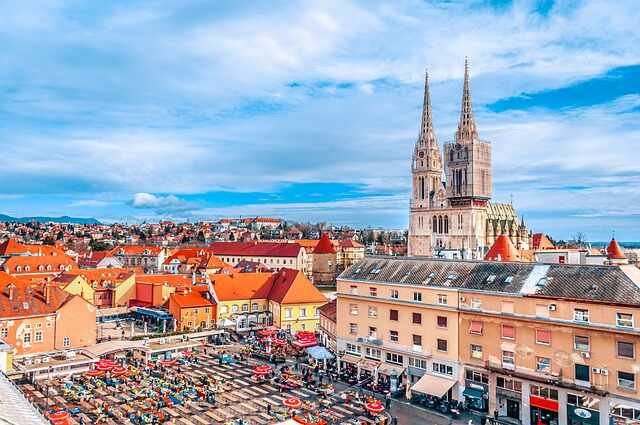Balinese Traditional Culture
Bali may well receive more than 3 million tourists each year, but it has not been distorted. Everywhere on the island – except perhaps around Kuta – you can attend processions, ceremonies or traditional shows. Balinese traditional culture remains extremely lively, coexisting and/or adapting to the new tourist situation, and that’s good!
Dances and music
Balinese dances are the finest and best-known expression of this cultural vitality. There are some 2,000 troupes on the island, which perform in temples, because dance in Bali is linked to the divine and the sacred: many shows are inspired, for example, by the Hindu epic Ramayana .
Under no circumstances miss a performance of legong or kecak (very spectacular): bewitchment guaranteed to the haunting sound of the gamelans (traditional instrument). Another show to discover: the wayang kulit puppets.
Temples and ceremonies, ancestral cultural heritage
Temples are the other major expression of Balinese cultural vitality. Throughout the year, even every day, ceremonies take place there. Tourists can attend with respect and discretion.
Cremations (in public) are among the most amazing ceremonies in the eyes of Westerners. Generally taking place 6 weeks after the death, they take on a certain splendor, as they constitute a crucial rite of passage for the deceased towards the afterlife.
Another surprising ceremony: the filing of teeth, which marks the adolescent’s entry into the adult world. Finally, there are lots of religious festivals throughout the year, bringing villages and temples to life, but also games, such as cockfighting, bird singing or kite flying competitions…
More than 10,000 Balinese temples, including the very famous Pura Batukaru Temple, located on the southern slope of the mount of the same name, surrounded by lush vegetation, bordering a lake, according to the inhabitants, it is a Paradise, nothing is more wonderful than getting up early for a visit to the temple in order to start a magnificent day, the Balinese tradition imposes appropriate clothing for visiting the temples, the body must be covered with a sarong, this makes it possible to keep the body intact. sacred side of the place.
Pictorial and culinary arts
Bali is also renowned for its painting, and in particular its naive paintings in an easily recognizable style, combining vegetation, animals and humans.
Finally, last but not least, Balinese cuisine will delight gourmets: try the traditional babi guling (stuffed suckling pig cooked on a spit), urab and bebek betut (duck). From warung to trendy designer restaurant, the island offers a very wide range, within reach of all budgets!
The peaceful and relaxed life in Bali
Nicknamed the Island of the Gods, this Indonesian island is perfectly suited to foreigners eager for cultural heritage, respect for traditions, water sports enthusiasts, scuba diving enthusiasts, adventurers of all kinds as well as retirees in search of calm and tranquility, Bali is intended as much for shopaholics as it is for lovers of relaxation.
Crafts, arts, and shopping in Bali
The center of Ubud is the ideal place to discover Balinese art and the wealth of local crafts.
Bamboo work, household furniture, traditional clothing, Sarongs, toys, artistic paintings, everything that Indonesian craftsmanship can produce can be found in the Ubud market.
Visitors take the opportunity to admire the royal palace located a few steps from the center, where the royal family usually resides.
The most interesting works of art are in the Puri Lukisan Museum, which has a remarkable park.
The ancestral culture of rice
In the most mountainous regions of the island, the cultivation of rice is a curiosity, terraces are laid out on the sides of the hills allowing the main agricultural activity of rice. Tourist attraction that fascinates apprentice photographers who park their vehicle as close as possible to the summit and thus enjoy the idyllic setting of the rice fields with the valley in the background. Bar, cafe and restaurants offer exotic dishes made from rice which among the Balinese is the equal of a goddess very appreciated by the population of Bali.
Bali and its beaches
The most famous beach in Bali is of course Kuta Beach, which is often overcrowded, it is nice to know that a few steps from Kuta Beach is Seminyak Beach, which is less popular and therefore less crowded with tourists.
If you have a vehicle, Sanur beach, known for offering magnificent sunsets, is half an hour away, for peace and quiet, Nusa Dua beach, for privacy, the beaches near Kuta less accessible but delicious, Seminyak beach with day and night festive atmospheres water sports enthusiasts will find themselves on the beach of Tanjung Benoa where water activities are numerous.
Traditional Balinese clothing
Bali an island full of colors. You will never cease to be in awe of the Balinese wearing their most beautiful traditional outfits to go to religious ceremonies or attend a wedding, for example, etc.
For women, or little girls, the hair is important. The favorite hairstyle is the chignon which is reminiscent of that of the pretty princess Drupadi, the wife of one of the Pandawa brothers, in the Mahabharata. Women who have short hair often add false locks in order to be able to wear it.
But it is important that those with sufficient length of hair tie it up and be neatly combed so that the strands of hair do not fall into the temple area and the sanctity of the temple is maintained. And for special events, such as their wedding, their teeth filing, or when they dance, a multitude of gold metal flowers are stuck in the girls’ hair, it’s very pretty, but it’s very heavy!
A long time ago, to dress themselves, women wrapped a long piece of cloth called sabuk all around their bust. It was narrower than the saput, but much longer, measuring more than three meters. Dancers and brides today still wear it, but other women wear kebaya. They are very beautiful long-sleeved shirts, mostly in colored and transparent lace and under corsets.
Nowadays the fashion is to have our shirts at elbow length or even shorter). They then wrap around their waist a sarong, it is a piece of cloth about two meters long, usually in printed batik that extends to the ankles. And finally, above, they tie a belt: selendang. The set is very colorful, but still well matched. Children dress like adults, but there are ready-made outfits for them bought in the markets, where the sarong is replaced by a long skirt, which is much more practical!
Until the 1930s Balinese women went to ceremonies topless but this changed because of the Dutch who managed to convince them to cover up.
Normally women should be dressed simply and correctly to go to the temple, but in recent years there has been a change in fashion in the traditional outfits of women who wear kebaya with mid-length or very short sleeves. This is starting to bother some who take a dim view of this change considering that it almost becomes a beauty contest to go to the temple and it’s too sexy. For example, at the Shiva temple in my village, it has been forbidden for a few months for women to wear kebaya with sleeves shorter than the elbow.
As for the colors of the kebaya originally, we expect them to be the color of purity and glory: white which symbolizes purity and yellow which represents triumph and prosperity.
During cremation the Balinese will wear black or dark colored kebaya, the highest castes can sometimes wear white if they wish.
Unfortunately in Bali times are changing and from now on the Balinese do not pay too much attention to the meaning and philosophy of all this. Today it’s more about fashion trends, luxury etc. and sometimes there are differences in social status.
Passage of rites in Balinese traditional culture
From its conception until its death, many ceremonies punctuate the life of a Balinese. Existence is a succession of lives and deaths. The newborn (reincarnation of an ancestor) must not touch impure soil before its 42nd day.
On his first birthday (oton – 210 days), a ceremony marks his entry into the community. The filing of the teeth then marks the entry into adult life. This ritual is generally performed at puberty, when the front teeth are filed to counter the animal side in humans.
Marriage represents a sacrifice to lower spirits in order to purify the sexual act. Cremation, on the other hand, allows the soul to reincarnate. It is a question of freeing the soul by destroying the carnal envelope which imprisons it. It is the most important ceremony in the cycle of life which gives rise to great celebrations.
Balinese traditional culture and Important days in Bali
The Balinese use two traditional calendars. The main one is the Pewukon which regulates a large part of Balinese life. It superimposes various cycles over a period of 210 days. The saka calendar, on the other hand, is inherited from the Indian system. Each month begins after the new moon, which gives rise to great ceremonies.
Odalan
Every 210 days (1 year according to the Pawukon calendar), the whole village comes together to commemorate the founding of the temple (the odalan).
It is then the occasion to pay homage to the divinities by offerings and prayers. With more than 20,000 temples in Bali, the opportunities to attend a ceremony are very numerous!
Galungan and Kuningan
Every 210 days, Galungan celebrates the creation of the universe. The Balinese believe that the gods and the souls of the ancestors descend to the temples.
Bali then comes alive to give rise to countless ceremonies and the festivities culminate ten days later for Kuningan.
Saraswati
Festival dedicated to the goddess of knowledge. The Balinese pay homage to books by sprinkling sacred water.
Tumpek
Every 35 days, the Balinese make offerings to precious goods such as iron objects (Tumpek Landep), animals (Tumpek Kandang), shadows (Tupek Wayang), trees (Tumpek Uduh) or musical instruments , masks and other objects used during ceremonies (Tumpek Krulut).
Pagerwesi
This day is dedicated to spiritual strengthening, called Iron Gate, prayers and offerings are directed to save mankind.
Nyepi
A few days before Nyepi, Melasti is celebrated all over the island. This is the great purification. The Balinese then converge on the sea to purify themselves there.
On the eve of Nyepi (New Year of the Saka calendar), all major crossroads receive large offerings that are believed to exorcise evil spirits. In the evening, large processions wander through the streets displaying the ogoh-ogog. Nyepi is the day of silence, no one has the right to go out in the street or turn on a light.
August 17, Indonesian independence
Bali gathers to celebrate Independence Day. This national holiday is important and allows everyone to remember the hardships they have gone through.
Sources: Villa Carissa Bali, PinterPandai
Photo credit: Mikhsan via Pixabay



